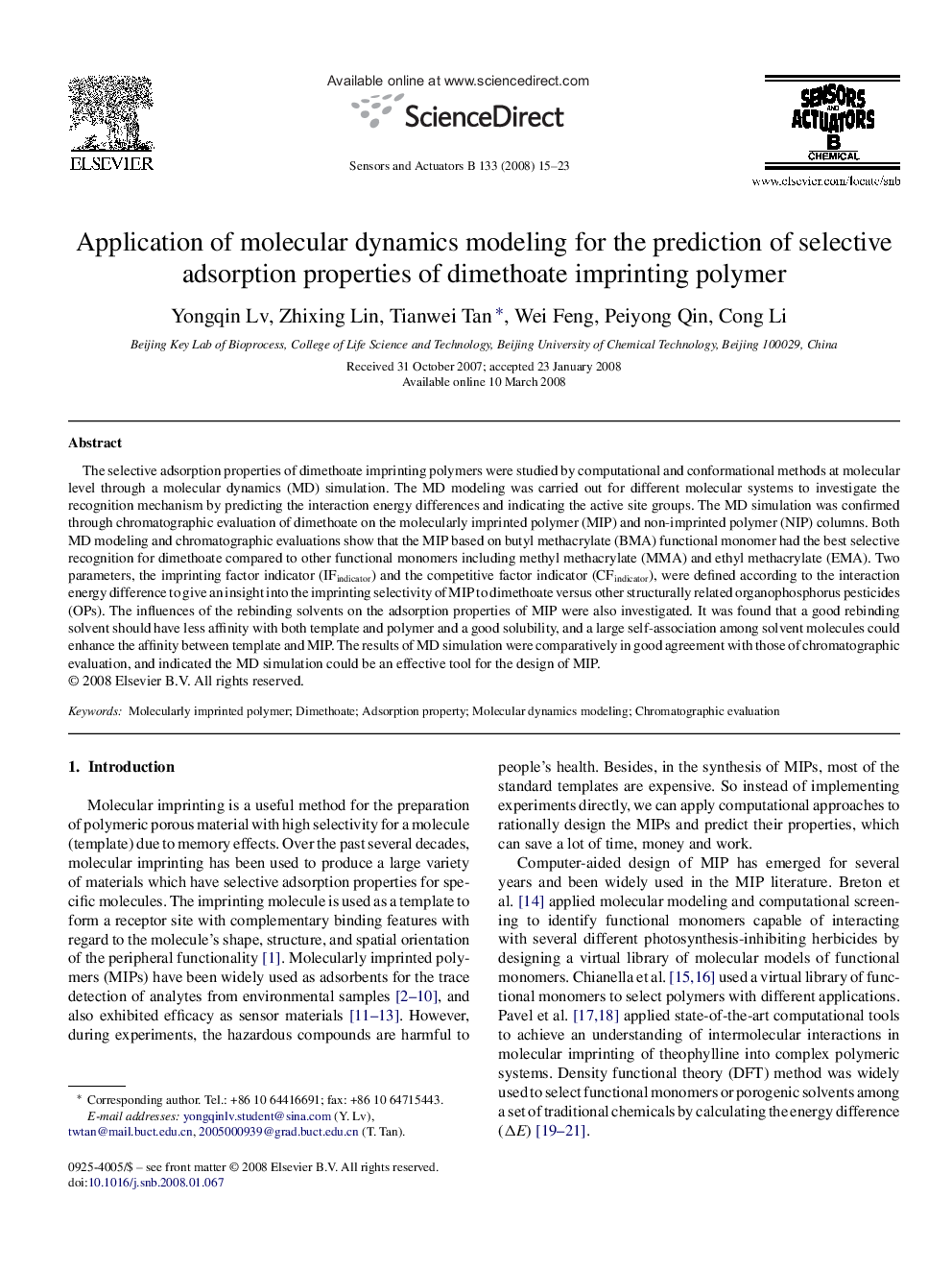| Article ID | Journal | Published Year | Pages | File Type |
|---|---|---|---|---|
| 743705 | Sensors and Actuators B: Chemical | 2008 | 9 Pages |
The selective adsorption properties of dimethoate imprinting polymers were studied by computational and conformational methods at molecular level through a molecular dynamics (MD) simulation. The MD modeling was carried out for different molecular systems to investigate the recognition mechanism by predicting the interaction energy differences and indicating the active site groups. The MD simulation was confirmed through chromatographic evaluation of dimethoate on the molecularly imprinted polymer (MIP) and non-imprinted polymer (NIP) columns. Both MD modeling and chromatographic evaluations show that the MIP based on butyl methacrylate (BMA) functional monomer had the best selective recognition for dimethoate compared to other functional monomers including methyl methacrylate (MMA) and ethyl methacrylate (EMA). Two parameters, the imprinting factor indicator (IFindicator) and the competitive factor indicator (CFindicator), were defined according to the interaction energy difference to give an insight into the imprinting selectivity of MIP to dimethoate versus other structurally related organophosphorus pesticides (OPs). The influences of the rebinding solvents on the adsorption properties of MIP were also investigated. It was found that a good rebinding solvent should have less affinity with both template and polymer and a good solubility, and a large self-association among solvent molecules could enhance the affinity between template and MIP. The results of MD simulation were comparatively in good agreement with those of chromatographic evaluation, and indicated the MD simulation could be an effective tool for the design of MIP.
